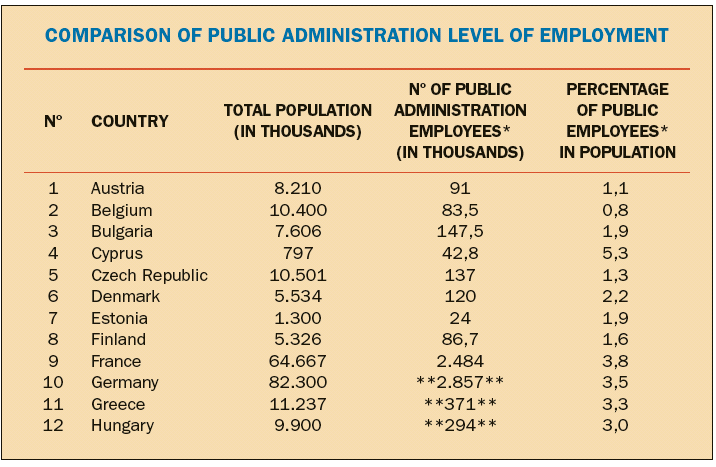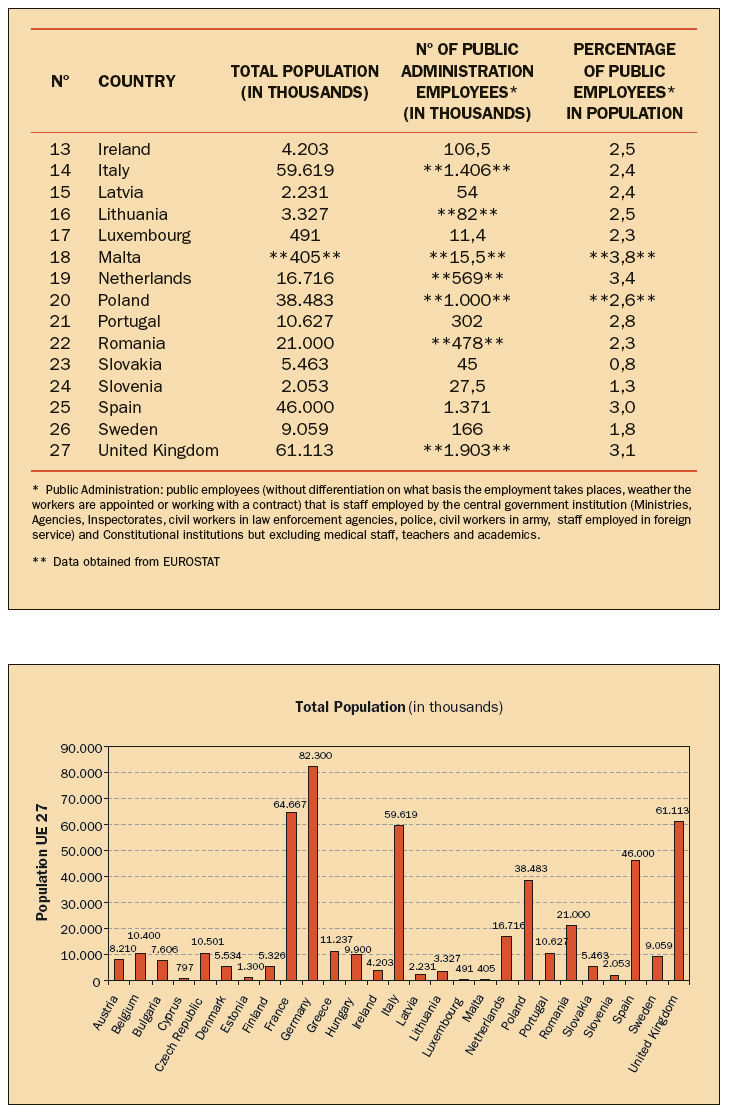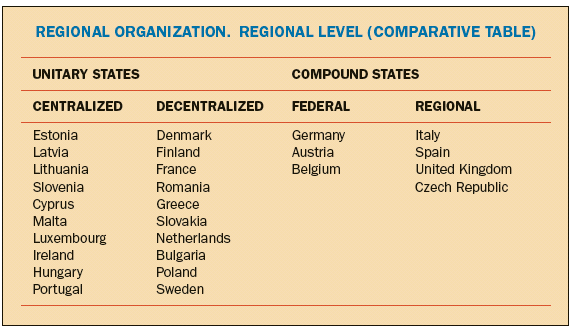Archive:Civil servants in the EU member states
- Data from Month Year, most recent data: Further Eurostat information, Main tables and Database.
The aim of this study is to provide a summary of the most important aspects of public employment within the community framework by means of a comparative analysis. This summary has been taken from the full study prepared by the aforementioned working group.
The study has been possible thanks to the cooperation of the different spokespersons in each country. However, due to time restrictions in its preparation, we must apologise for any inaccuracies or errors that may have occurred, and interested parties are requested to provide any necessary clarifications or corrections.
The study, which follows the same structure for all countries, does not intend to be exhaustive or in-depth as this is not its purpose, but instead, it provides an introduction to this type of employment within the community and may be used as a starting point for future specific studies.
Main statistical findings
Regional and administrative organization
All executive powers in the European Union are dual, the role of Head of State may be exercised by the Monarch, (Sweden, Denmark, Netherlands, Belgium, United Kingdom, Luxembourg and Spain), or by the President of the Republic (remaining countries). Judiciary power is characterized by its homogeneity and independence compared with other powers. In all cases, legislative power lies with a Parliament that may have a single chamber or two chambers.
Local Level There are different levels of self-government and classification of local authorities, whereby the spectrum of powers varies depending on the countries. The local level plays an important role in the Nordic countries, Netherlands and United Kingdom. In any case, all EU countries have ratified the European Charter of Local Self-Government.
Public administration The administrative organization of the EU countries has evolved from an initial Bureaucratic Administration through the modernization of structures, creation of agencies, specialization of duties, on-going training, the use of new technologies and the outsourcing of services.
Civil Service Structure
Civil Servants. Current Situation.
1. Duality, in most countries between civil servants and non-civil service employees, with different legal systems and a tendency to unify the contents and working conditions of both groups.
2. Their excessive temporary nature is a widespread phenomenon in both the public and private sectors.
3. Problems in differentiating functions to be carried out by civil servants, non-civil service employees and by those recruited using trust criteria. The latter are usually temporary and are recruited to perform management or administrative management functions.
In general, the following types exist:
A. Civil Servants: This is a heterogeneous group and is made up of all those public employees linked to a Public Administration through an act of appointment and a statutory relation which is essentially regulated by Administrative Law. The civil servant condition does not necessarily mean that they work full time in public service, but it is compatible with part-time work or, where appropriate, working from home or any other forms that may be established by the corresponding laws and according to needs.
B. Non-civil service employees: Non-civil service employees serving Public Administrations and Authorities are governed by employment law but with special conditions and numbers have increased over the years. The main problem in most of the EU member states is the system to apply and uniformity of conditions in the provision of services.
C. Interim/Transitory/Temporary Staff: This type of staff fills a vacancy that is not performed by a career-based civil servant. They are recruited in all Member States on the principles of merit and ability and they are freely appointed and released. Their numbers and duties differ from country to country.
D. Management: Managers assume important responsibilities with high added value in most countries. Their regulatory system, responsibilities, working hours and remuneration level varies in the different civil service systems.
Staff management is vested in the government through ministries: Ministry for Public Administration (Slovenia), Home Office (Czech Republic) or Finance (Denmark) etc. Remuneration and budgetary powers affecting civil servants usually lies with the ministry responsible for finance.



Data sources and availability
<description of data sources, survey and data availability (completeness, recency) and limitations>
Context
<context of data collection and statistical results: policy background, uses of data, …>
Further Eurostat information
Publications
- Public employment in European Union Member States - Madrid, 2010 (pdf file, 7.47 Mb)
Main tables
- Title(s) of second level folder (if any)
- Title(s) of third level folder (if any)
Database
- Title(s) of second level folder (if any)
- Title(s) of third level folder (if any)
Dedicated section
Methodology / Metadata
<link to ESMS file, methodological publications, survey manuals, etc.>
- Name of the destination ESMS metadata file (ESMS metadata file - ESMS code, e.g. bop_fats_esms)
- Title of the publication
Source data for tables, figures and maps on this page (MS Excel)
Other information
<Regulations and other legal texts, communications from the Commission, administrative notes, Policy documents, …>
- Regulation 1737/2005 of DD Month YYYY on ...
- Directive 86/2003 of DD Month YYYY on ...
- Commission Decision 86/2003 of DD Month YYYY on ...
<For other documents such as Commission Proposals or Reports, see EUR-Lex search by natural number>
<For linking to database table, otherwise remove: {{{title}}} ({{{code}}})>

